Canada
Welcome to Canada
Canada, known as the Great White North, is a vast and diverse country that offers an extraordinary blend of natural beauty, vibrant cities, and rich cultural experiences. From the towering peaks of the Rocky Mountains to the cosmopolitan streets of Toronto and Montreal, Canada invites travelers to explore its breathtaking landscapes and welcoming communities. Whether you are an adventure seeker, a history enthusiast, or someone looking to immerse in multicultural urban life, Canada has something unique to offer every visitor.
Spanning nearly 10 million square kilometers, Canada is the second-largest country in the world by land area. It comprises ten provinces and three territories, each with distinct landscapes and cultural flavors. The country boasts an incredible variety of environments-from the Arctic tundra in the north to lush coastal forests and pristine lakes in the west and east. Canadian cities are known for their progressive values, multicultural populations, and high quality of life. Toronto stands out as one of the most multicultural cities globally, while Montreal offers a rich French heritage, and Vancouver combines urban life with stunning natural surroundings. The capital city, Ottawa, is home to historic government buildings, museums, and the famous Rideau Canal. Outdoor enthusiasts can explore national parks like Banff and Jasper, enjoy whale watching on the east coast, or witness the Northern Lights in the Yukon. Canada’s friendly people and safe environment make it a welcoming destination for travelers worldwide.
Why Visit Canada?
1
Unparalleled Natural Beauty: Canada’s diverse landscapes provide endless opportunities for outdoor adventures. Whether hiking on glacier trails, kayaking along rugged coastlines, or skiing in world-class resorts, the country’s natural wonders are awe-inspiring and accessible.
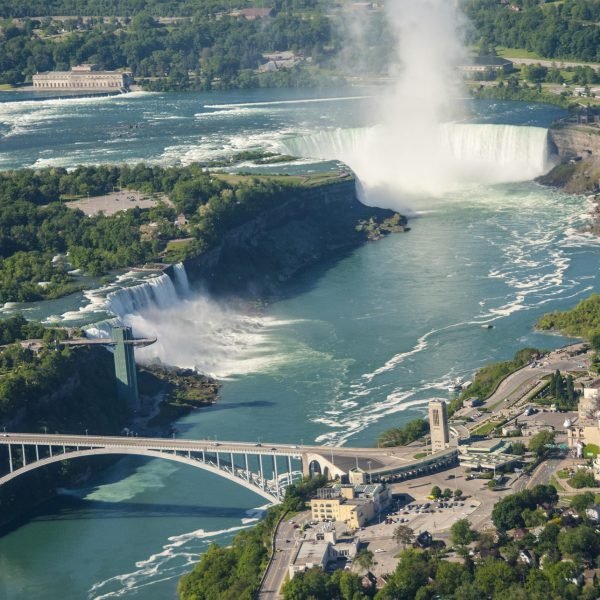
2
Vibrant Cultural Experiences: Canada’s cities offer a dynamic mix of cultural events, culinary delights, and historical sites. From the jazz festivals of Montreal to the indigenous heritage in the Yukon, visitors can experience a rich tapestry of traditions and modern lifestyles.
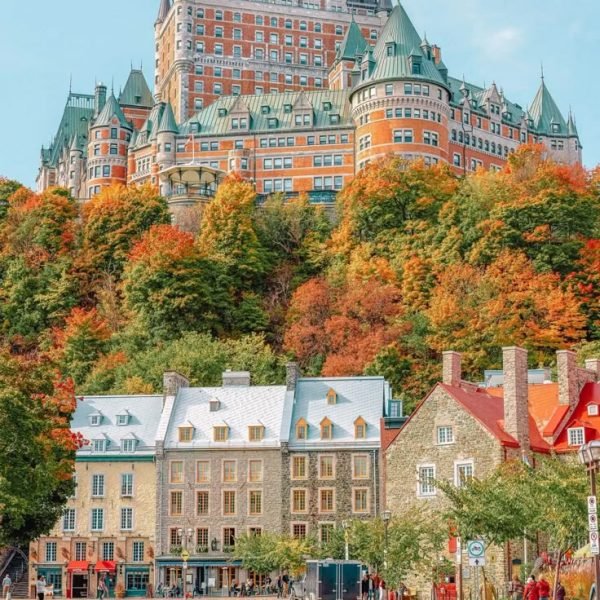
Planning Your Trip
Visa Information
Most travelers to Canada will need a visa or an Electronic Travel Authorization (eTA) depending on their nationality and the purpose of their visit. Tourist visas are commonly required for visitors from many countries, and the application process involves submitting documents such as proof of funds, travel itinerary, and sometimes biometric data. Canada also offers working holiday visas for certain countries, allowing travelers to work and extend their stay while exploring the country. It is advisable to check the latest visa requirements and apply well in advance to avoid delays.
Best Time to Visit
Canada’s vast size means the best time to visit depends on the region and the activities you want to enjoy. Generally:
- Summer (June to August): Ideal for exploring cities, national parks, and coastal areas. Warm weather makes it perfect for hiking, festivals, and outdoor activities.
- Fall (September to October): Offers stunning autumn foliage, especially in eastern provinces like Quebec and Ontario. Cooler temperatures and fewer tourists make it a pleasant time to visit.
- Winter (December to February): Best for winter sports enthusiasts who want to ski, snowboard, or enjoy ice skating. Cities also have festive holiday events.
- Spring (March to May): A quieter season with blooming landscapes and milder weather, good for city sightseeing and early outdoor adventures.
Getting To and Around
Getting To Canada
Canada is well connected by air to major cities around the world. The main international airports include Toronto Pearson International Airport, Vancouver International Airport, and Montréal-Trudeau International Airport. Direct flights are available from North America, Europe, Asia, and other regions. For travelers from the United States, there are numerous land border crossings and domestic flights.
Getting Around Canada
Due to its immense size, traveling within Canada often requires a combination of transportation modes:
- By Air: Domestic flights are common for covering long distances quickly, especially between major cities and remote areas.
- By Car or RV: Canada is famous for its scenic road trips. The Trans-Canada Highway stretches coast to coast, offering an unforgettable way to explore small towns, national parks, and diverse landscapes. Renting an RV is popular for those seeking flexibility and adventure.
- By Train: Train travel, particularly in Eastern Canada, is convenient and scenic, connecting cities like Toronto, Montreal, and Quebec City. The Rocky Mountaineer offers luxury rail journeys through the Rockies.
- Public Transit: Major cities have reliable public transportation systems including buses, subways, and light rail, making urban exploration easy and affordable.
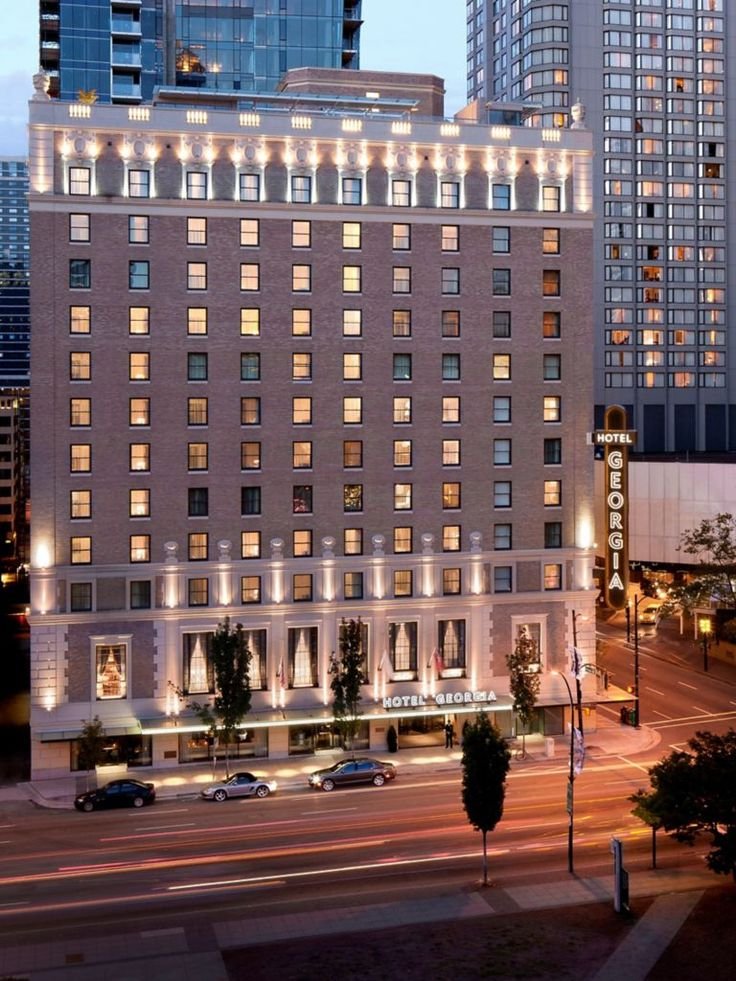
Accommodation
When planning your trip to Canada in 2025, finding the right accommodation is essential for a comfortable and enjoyable stay. Canada offers a wide range of lodging options suited to every traveler’s needs, from budget-friendly hostels and student residences to luxury hotels and cozy homestays.
Hotels and Motels
Major cities like Toronto, Vancouver, Montreal, and Calgary feature a broad spectrum of hotels ranging from international luxury chains to boutique hotels and budget motels. These are ideal for travelers seeking convenience, amenities, and central locations.
Hostels and Budget Lodging
For backpackers and budget-conscious travelers, hostels are plentiful, especially in urban centers and popular tourist destinations. They offer dormitory-style rooms and private rooms, often with communal kitchens and social spaces.
Vacation Rentals and Apartments
Platforms offering short-term rentals provide options for families or groups wanting more space and the comforts of home, such as kitchens and living areas. These are great for longer stays or those seeking a local neighborhood experience.
Student Residences, Homestays, and Off-Campus Shared Apartments
- If you’re visiting as a student or prefer a community atmosphere, many Canadian universities offer on-campus residences. These dormitories provide furnished rooms, meal plans, and easy access to campus facilities. Popular universities with student residences include the University of British Columbia, University of Toronto, McGill University, and Queen’s University. These options are particularly convenient for students or visitors attending events on campus.
- For a more immersive cultural experience, homestays allow travelers to live with Canadian families. This option often includes a private room and meals, providing a unique chance to experience Canadian daily life and hospitality firsthand.
- Many international students and travelers opt for shared apartments off-campus, which offer more independence and privacy. Sharing an apartment can significantly reduce costs and provide a more adult living experience. These accommodations typically include private bedrooms with shared common areas like kitchens and living rooms.
Choosing Accommodation and Cost Considerations
When selecting accommodation, consider your budget, desired level of privacy, and proximity to the places you want to visit. On-campus or centrally located hotels are convenient but can be pricier, while off-campus apartments or homestays may offer better value and cultural immersion. For students or long-term visitors, shared apartments or cooperative housing can be economical and community-oriented.
Accommodation costs vary widely across Canada. Major cities like Toronto and Vancouver tend to be more expensive, with hotel rates averaging from CAD 150 to CAD 300 per night for mid-range options. Student residences and shared apartments usually cost between CAD 700 and CAD 1,500 per month depending on location and amenities. Smaller cities and rural areas offer more affordable lodging options.

Food and Drink
Canada’s culinary scene is as diverse and vibrant as its population, reflecting a rich mosaic of cultural influences and local ingredients. Whether you crave traditional Canadian dishes, international flavors, or innovative fusion cuisine, Canada’s food and drink offerings will delight every palate.
Traditional Canadian Cuisine
- Poutine: Originating from Quebec, poutine is a must-try comfort food consisting of crispy fries topped with cheese curds and smothered in rich gravy.
- Maple Syrup: Canada is the world’s largest producer of maple syrup, and you’ll find it drizzled over pancakes, waffles, and desserts or used as a glaze for meats.
- Tourtière: A savory meat pie typically made with minced pork or beef, popular especially during the holiday season.
- Nanaimo Bars: A no-bake dessert bar from British Columbia featuring layers of crumbly base, custard-flavored middle, and chocolate topping.
Regional Specialties
- East Coast: Seafood lovers will enjoy fresh lobster, scallops, and cod, often prepared in hearty chowders or simply steamed.
- Prairies: Known for bison and beef dishes, the prairie provinces also highlight farm-fresh produce and artisanal cheeses.
- West Coast: Vancouver and surrounding areas showcase Pacific salmon, sushi, and Asian-inspired cuisine, reflecting the region’s multicultural population.
Dining Experiences
- Fine Dining: Canada boasts numerous award-winning restaurants with innovative chefs offering menus that celebrate local ingredients and global techniques.
- Casual Eateries: From food trucks to casual bistros, you’ll find an array of affordable and delicious options serving everything from burgers to ethnic street food.
- Farmers’ Markets and Food Festivals: Across the country, farmers’ markets provide fresh local produce, artisanal breads, cheeses, and baked goods. Food festivals celebrate everything from wine and craft beer to multicultural dishes.
Beverages
- Canadian Whisky: Known worldwide, Canadian whisky is smooth and versatile, often enjoyed neat or in cocktails.
- Craft Beer: The craft beer scene has exploded in recent years, with breweries across provinces producing a wide variety of styles, from IPAs to stouts.
- Wine: Canada’s wine regions, such as Niagara Peninsula in Ontario and Okanagan Valley in British Columbia, produce excellent cool-climate wines, especially whites and ice wines.
- Non-Alcoholic: Coffee culture is strong, with many independent cafés serving high-quality brews. Maple-flavored soft drinks and locally made juices are also popular.
Tips for Enjoying Food and Accommodation in Canada
- Book accommodation well in advance, especially during peak tourist seasons (summer and winter holidays) to secure the best rates and availability.
- Explore local neighborhoods beyond the main tourist areas to discover hidden gems in dining and lodging.
- Try seasonal and regional specialties to get a true taste of Canada’s culinary diversity.
- For longer stays, consider accommodations with kitchen facilities to prepare your own meals and save money.
- Don’t hesitate to ask locals or your hosts for restaurant recommendations-they often know the best spots off the beaten path.
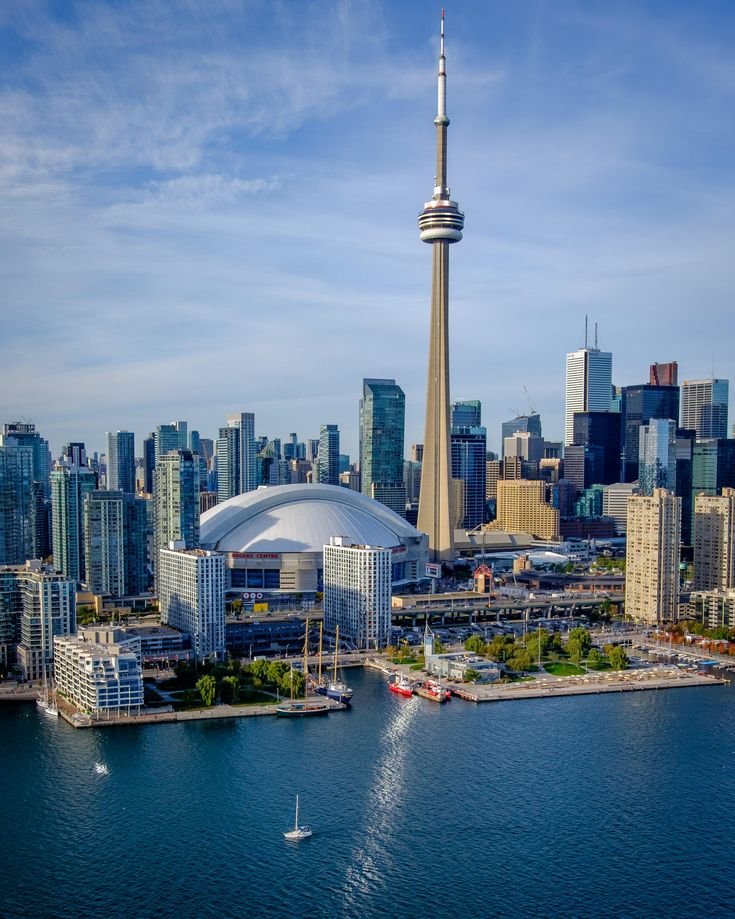
Must-See Attractions
Canada is a vast and diverse country brimming with iconic sights and unforgettable experiences. Whether you’re drawn to dramatic natural landscapes, vibrant cities, or unique cultural events, Canada offers a wealth of attractions and activities that cater to every traveler’s interests.
1. Niagara Falls, Ontario
One of the most famous natural wonders in the world, Niagara Falls captivates visitors with its thunderous cascades and stunning panoramic views. Beyond simply admiring the falls from the observation decks, you can take the thrilling boat ride on the Maid of the Mist or explore the Journey Behind the Falls tunnels for an up-close perspective of the roaring water. The surrounding area also offers beautiful parks, vibrant nightlife, and family-friendly attractions, making it a versatile destination for all ages.
2. Banff National Park, Alberta
Canada’s oldest national park, Banff is a jewel of the Canadian Rockies. It offers breathtaking turquoise lakes like Lake Louise and Moraine Lake, snow-capped peaks, and abundant wildlife such as elk and bears. The town of Banff provides charming shops and restaurants, but the real draw is the outdoor adventure: hiking scenic trails, riding the Banff Gondola for sweeping mountain views, or soaking in the Banff Upper Hot Springs. The Icefields Parkway, a spectacular drive connecting Banff to Jasper, is itself an attraction with glaciers and waterfalls at every turn.
3. Quebec City, Quebec
Stepping into Quebec City is like entering a European fairy tale. Its cobblestone streets, historic architecture, and fortified walls create a unique atmosphere. The iconic Château Frontenac dominates the skyline, while the Old Town offers quaint cafés, artisan shops, and cultural festivals. Don’t miss the impressive Notre-Dame Basilica with its vibrant stained glass and immersive light shows that bring history to life.
4. Toronto, Ontario
Canada’s largest city is a dynamic urban hub blending modern skyscrapers with historic neighborhoods. The CN Tower, one of the tallest freestanding structures globally, offers panoramic city views and a glass-floor experience for thrill-seekers. Toronto’s cultural institutions like the Royal Ontario Museum and the Art Gallery of Ontario showcase world-class exhibits. Neighborhoods such as Kensington Market and the Distillery District offer eclectic shops, street art, and diverse culinary delights.
5. Vancouver, British Columbia
Nestled between the Pacific Ocean and the Coast Mountains, Vancouver is renowned for its natural beauty and outdoor lifestyle. Stanley Park, a sprawling urban park with scenic seawall paths, is perfect for cycling or leisurely walks. The city’s multicultural vibe shines through in its food scene and vibrant arts community. Nearby, Grouse Mountain offers hiking and wildlife encounters, while the Capilano Suspension Bridge provides a thrilling walk above lush forest canopies.
6. Jasper National Park, Alberta
Less crowded than Banff but equally stunning, Jasper is a wilderness playground with glaciers, waterfalls, and vast forests. The Jasper SkyTram takes visitors to the summit of Whistlers Mountain for breathtaking views. Athabasca Falls and Sunwapta Falls showcase powerful cascades surrounded by pristine nature. Jasper is also a prime spot for stargazing and spotting wildlife like moose and mountain goats.
7. Churchill, Manitoba – Northern Lights
For a truly magical experience, Churchill offers one of the best places on earth to witness the Aurora Borealis. In 2025, solar activity is predicted to be particularly high, enhancing the spectacle of the Northern Lights. This remote town, accessible mainly by train or plane, also offers polar bear tours in season, making it a bucket-list destination for nature lovers and photographers.
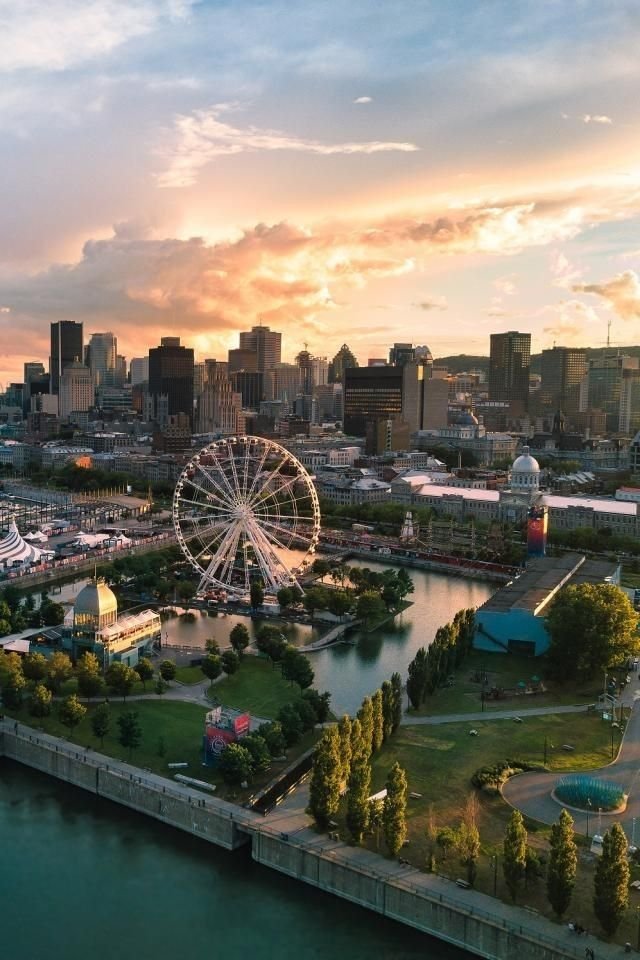
Must-Do Activities
1. Explore the Canadian Rockies by Road and Rail
A road trip along the Icefields Parkway between Banff and Jasper is one of the most scenic drives in the world. You’ll pass glaciers, turquoise lakes, and towering peaks. For a luxurious twist, consider the Rocky Mountaineer train journey, which offers gourmet meals and panoramic views through glass-domed cars, combining comfort with awe-inspiring scenery.
2. Canoeing and Kayaking on Glacier-Fed Lakes
In Banff and Jasper National Parks, paddling on lakes like Louise, Moraine, or Maligne Lake is a serene way to connect with nature. The vivid blue waters surrounded by dramatic mountain backdrops provide a postcard-perfect setting. Rentals and guided tours are widely available, suitable for beginners and experienced paddlers alike.
3. Hiking and Wildlife Watching
Canada’s national parks are home to diverse wildlife including bears, elk, bighorn sheep, and eagles. Popular trails range from easy lakeside strolls to challenging mountain hikes. Early morning or late afternoon hikes increase your chances of spotting animals in their natural habitats. Always follow park safety guidelines to respect wildlife and stay safe.
4. Experience Indigenous Culture and Heritage
Many regions in Canada offer opportunities to learn about Indigenous peoples’ traditions and histories. From cultural centers and museums to guided tours led by Indigenous hosts, visitors can engage with storytelling, traditional crafts, and ceremonies that enrich understanding of Canada’s diverse heritage.
5. Urban Food and Art Tours
Cities like Toronto, Montreal, and Vancouver boast vibrant culinary scenes reflecting their multicultural populations. Food tours allow you to sample local specialties and international flavors while exploring historic neighborhoods. Likewise, art walks and gallery tours highlight Canada’s thriving contemporary art and street art scenes.
6. Skiing and Snowboarding
During winter, Canada transforms into a snowy playground. Whistler Blackcomb in British Columbia and Lake Louise Ski Resort in Alberta are world-renowned for their extensive runs and reliable powder. Whether you’re a beginner or expert, these resorts offer lessons, rentals, and après-ski activities to round out your day on the slopes.
7. Whale Watching on the East and West Coasts
Canada’s coastal waters are prime locations for spotting whales. On the Pacific coast near Vancouver Island, you can see orcas, humpbacks, and gray whales. The Bay of Fundy and the Gulf of St. Lawrence on the Atlantic side offer sightings of blue whales and minke whales. Guided boat tours provide educational commentary and safe wildlife viewing.
8. Attend Festivals and Seasonal Events
Canada’s cultural calendar is packed with festivals celebrating music, film, food, and heritage. Highlights include the Montreal Jazz Festival, Toronto International Film Festival, Quebec Winter Carnival, and Vancouver’s Celebration of Light fireworks. Timing your visit to coincide with these events adds a lively and memorable dimension to your trip.
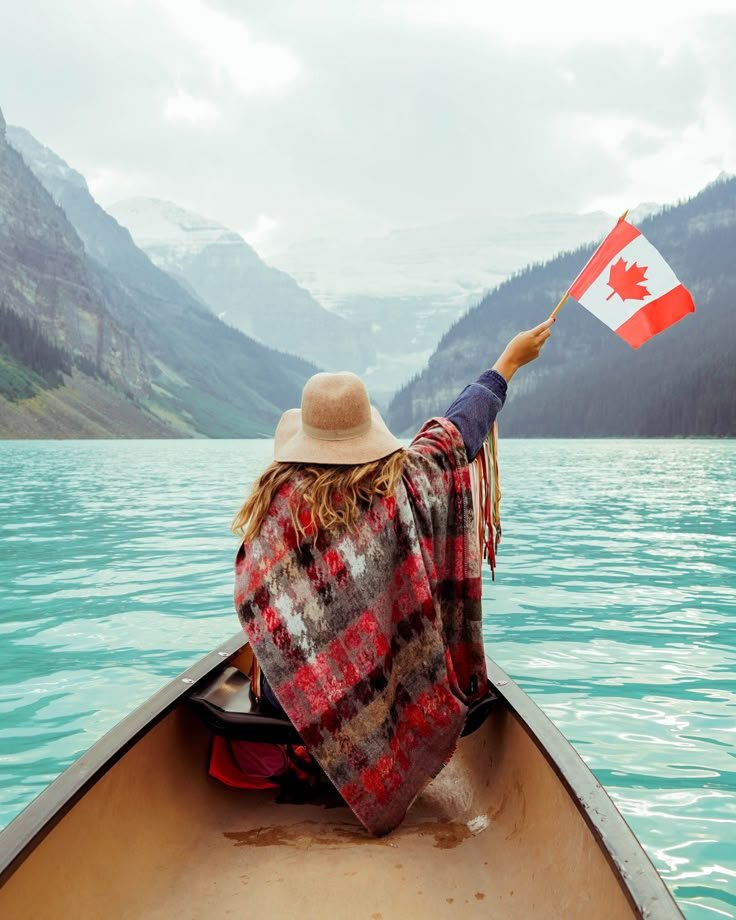
Travel Tips
Traveling to Canada in 2025 promises an enriching and safe experience, thanks to the country’s reputation as one of the world’s safest and most welcoming destinations. To make the most of your visit, it’s important to be aware of practical safety tips, understand local customs, and grasp some language basics. This guide will equip you with essential knowledge to navigate Canada confidently and respectfully.
Safety Advice
Canada consistently ranks among the safest countries globally for travelers, thanks to low crime rates, robust infrastructure, and effective law enforcement. However, like any destination, staying vigilant and prepared enhances your security and enjoyment.
General Safety Tips
- Stay Aware of Your Surroundings: While violent crime is rare, petty theft like pickpocketing can occur in crowded tourist spots and public transit. Keep your belongings secure, avoid flashing valuables, and be cautious in busy areas.
- Use Official Transportation: When using taxis or ride-hailing services, opt for licensed providers or reputable app-based services. Avoid accepting rides from unmarked vehicles or unofficial drivers.
- Secure Your Accommodation: Choose hotels or rentals with good security measures. Lock doors and windows, and use hotel safes for valuables.
- Road Safety: Canada’s road infrastructure is excellent, but wildlife crossings are common, especially in rural and mountainous areas. Drive attentively, obey speed limits, and watch for animal crossing signs to avoid collisions with moose, deer, or bears.
- Emergency Contacts: Save local emergency numbers (911 is universal in Canada) and the contact details of your country’s embassy or consulate. Register with your government’s traveler registry if available to receive emergency updates.
- Health Precautions: Canada has high standards of healthcare, but medical services can be costly for visitors without insurance. Purchase comprehensive travel health insurance covering emergencies, trip interruptions, and evacuation. Stay up to date on routine vaccinations and follow standard hygiene practices.
- Weather Preparedness: Canada’s climate varies widely. Winters can be harsh with snow and ice, especially in northern and mountainous regions. Dress in layers, check weather forecasts, and be prepared for sudden changes.
Stay Informed
Before and during your trip, monitor official travel advisories and local news. These sources provide updates on any regional safety concerns, natural events, or civil disruptions. Registering with services like Canada’s Registration of Canadians Abroad (ROCA) or your home country’s equivalent ensures you receive timely alerts.
Local Customs
Canada is a multicultural nation known for politeness, inclusivity, and respect for diversity. Understanding local customs will help you connect with Canadians and navigate social situations smoothly.
Politeness and Courtesy
- Canadians are famously polite and value courteous behavior. Simple gestures like saying “please,” “thank you,” and “sorry” go a long way.
- When entering shops, restaurants, or homes, a friendly greeting and a smile are appreciated.
- Queuing patiently and respecting personal space are social norms widely observed.
Tipping Culture
- Tipping is customary in Canada and considered part of service workers’ income. Standard tips range from 15% to 20% of the bill in restaurants, bars, taxis, and for hotel staff.
- Some establishments may add a gratuity automatically for large groups, so check your bill.
Respect for Indigenous Peoples
- Canada recognizes and respects the rights and cultures of its Indigenous peoples. Visitors are encouraged to learn about Indigenous history and traditions.
- When visiting Indigenous lands or cultural sites, follow guidelines, ask permission before taking photos, and show respect for ceremonies and artifacts.
Environmental Awareness
- Canadians take environmental conservation seriously. Recycling, waste reduction, and respecting natural habitats are important.
- When visiting parks or wilderness areas, follow “Leave No Trace” principles: pack out all trash, stay on designated trails, and avoid disturbing wildlife.
Language and Communication Etiquette
- Canadians appreciate clear and respectful communication. Interrupting or raising your voice is generally frowned upon.
- In Quebec and some other areas, French is the primary language. Even a simple greeting or “thank you” in French is welcomed.
Language Basics
Canada is officially bilingual, with English and French as its two official languages. English is predominant in most provinces, while French is the main language in Quebec and parts of New Brunswick and Ontario.
English Phrases
- Hello / Hi
- Please
- Thank you
- Excuse me / Sorry
- Where is…?
- How much does this cost?
- Do you speak English?
French Phrases (Useful Mainly in Quebec and Francophone Areas)
- Bonjour (Hello / Good morning)
- Merci (Thank you)
- S’il vous plaît (Please)
- Excusez-moi (Excuse me)
- Où est…? (Where is…?)
- Combien ça coûte? (How much does this cost?)
- Parlez-vous anglais? (Do you speak English?)
Pronunciation Tips
- Canadians speak English with a clear accent, often considered neutral and easy to understand.
- In French-speaking regions, locals may speak quickly, but most are happy to help visitors and appreciate any effort to speak French.
Additional Tips and Final Thoughts
Additional Practical Tips
- Currency: The Canadian dollar (CAD) is the official currency. Credit and debit cards are widely accepted, but it’s useful to carry some cash for small purchases or in remote areas.
- Electrical Outlets: Canada uses 120V at 60Hz with Type A and B plugs. Travelers from regions with different standards should bring appropriate adapters.
- Time Zones: Canada spans six primary time zones. Be mindful of time differences when planning travel or communication.
- Cultural Events: Participating in local festivals or markets is a great way to experience Canadian culture firsthand. Always check schedules and book tickets in advance.
- Public Behavior: Public drinking laws vary by province; consuming alcohol in public places is generally prohibited except in designated areas.
Canada’s combination of safety, welcoming culture, and linguistic diversity makes it an accessible and rewarding destination for travelers in 2025. By following these travel tips-staying vigilant, respecting local customs, and embracing the bilingual nature of the country-you’ll enjoy a smooth, respectful, and enriching Canadian adventure. Whether exploring vibrant cities or pristine wilderness, your journey through Canada will be marked by warmth, security, and memorable connections.

